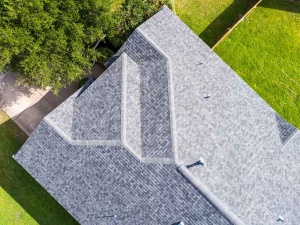When the wind picks up, your roof is the first line of defense for your home. But not all roofs are equally prepared for the gusts. Some roofs are more wind-resistant than others, and there are a few key factors that determine how well your roof stands up to strong winds. Take a look at what makes certain roofs tougher in windy weather.
The Right Roof Material Makes a Difference
What your roof is made of matters more than you might think. Materials like asphalt shingles, when properly installed, can hold up well against the wind. On the other hand, materials like wood shakes are more vulnerable to damage. Metal roofs are an excellent option, too—they’re known for their ability to resist wind damage and are less likely to be blown off or damaged during a storm.
How Your Roof Is Shaped
The design of your roof plays a big part in how it handles the wind. Steeper roofs tend to do better because wind has a harder time getting underneath them. Roofs with a simple design (fewer valleys, ridges, and chimneys) are also better at keeping wind at bay. More complex roofs give the wind more places to get under, making them a bit more vulnerable.
Installation Counts
Even if you have top-notch materials and a great roof design, the installation process matters just as much. A roof that’s properly installed with secure fasteners, sealed edges, and strong underlayment is much more likely to stay in place when the wind blows hard. But if the installation wasn’t done right, you could end up with loose shingles or tiles that might get ripped off when the weather turns.
Keep It Well-Maintained
Older roofs or ones that haven’t been kept in good condition are more likely to suffer wind damage. Over time, wear and tear can weaken materials, leaving your roof more vulnerable. Regular maintenance—like fixing up damaged shingles or flashing—can help keep your roof strong and prepared for the next storm.
Where You Live and How Your Roof Is Sloped
Where your home is located plays a big role in how much wind your roof is exposed to. If you live in an area that regularly experiences strong winds or storms, you’ll need a roof that’s built to handle those conditions. The slope of your roof also makes a difference—flatter roofs are generally more vulnerable to wind than steeper ones, which can better deflect the wind.
Whether you’re building a new roof or maintaining the one you have, make sure it’s ready to handle whatever weather comes your way. If you’re unsure about your roof’s wind resistance, contact Easton Roofing at (913) 257-5426 or fill out our online form to schedule an appointment.






























